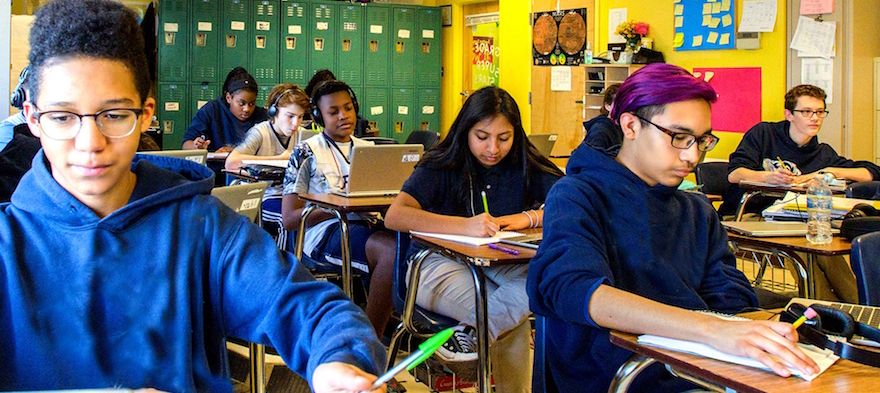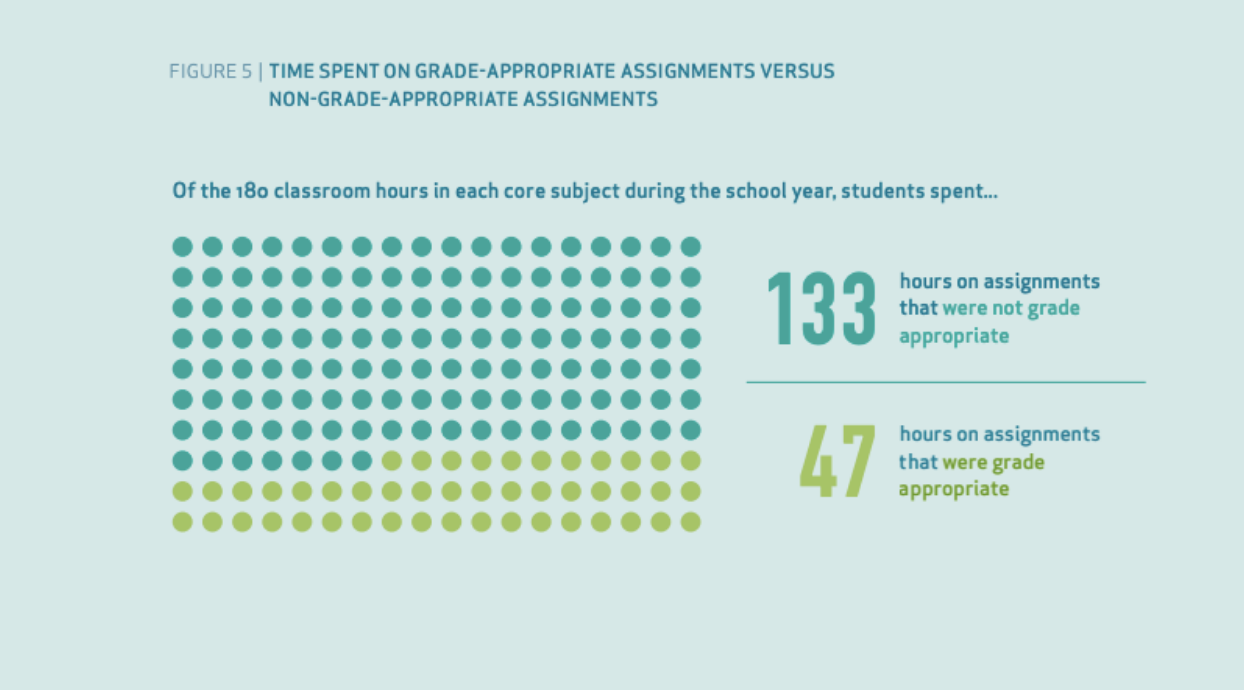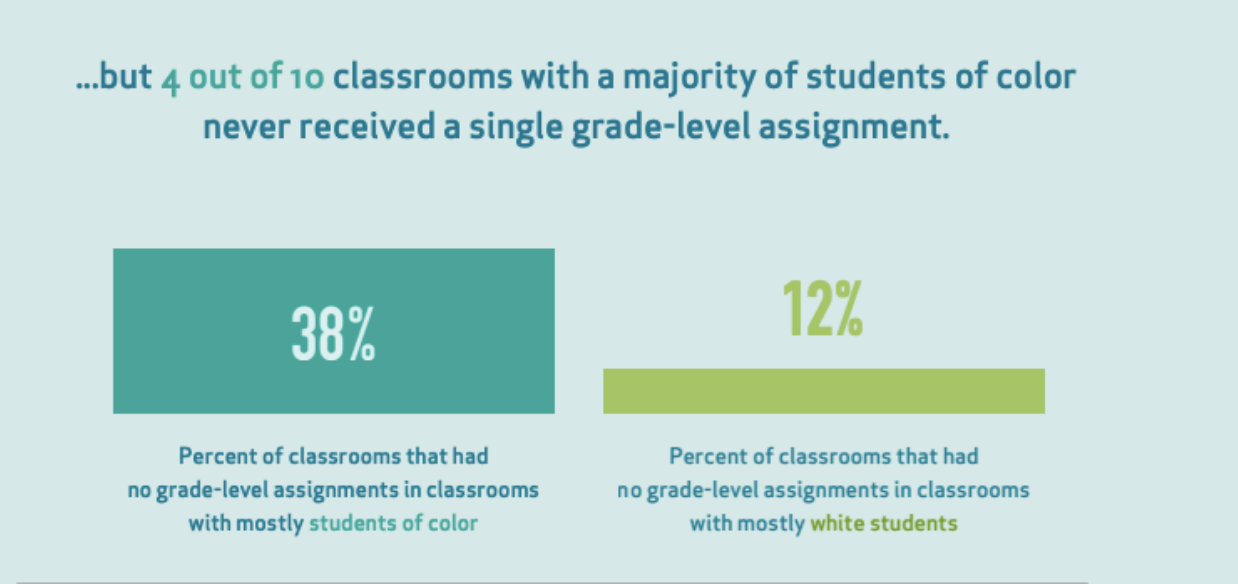
 Though students met the requirements of their classroom assignments 71 percent of the time (and earned A’s and B’s), they only demonstrated mastery on grade-level standards 17 percent of the time. Clearly, classroom assignments must be more rigorous to inspire the deep engagement required for learning and memory retention. Additionally, some teachers neither held their students to high expectations nor provided strong instruction. Less than half of the teachers reported that they thought their students could meet or exceed grade-level standards. The features are even more lacking in schools serving marginalized students. Classrooms that serve predominantly high-income students spent twice as much time on grade-appropriate assignments and five times as much time with strong instruction, compared to classrooms with predominantly low-income students. Moreover, classrooms filled with mostly students of color received grade-level assignments much more infrequently than classrooms filled with mostly White students.
Though students met the requirements of their classroom assignments 71 percent of the time (and earned A’s and B’s), they only demonstrated mastery on grade-level standards 17 percent of the time. Clearly, classroom assignments must be more rigorous to inspire the deep engagement required for learning and memory retention. Additionally, some teachers neither held their students to high expectations nor provided strong instruction. Less than half of the teachers reported that they thought their students could meet or exceed grade-level standards. The features are even more lacking in schools serving marginalized students. Classrooms that serve predominantly high-income students spent twice as much time on grade-appropriate assignments and five times as much time with strong instruction, compared to classrooms with predominantly low-income students. Moreover, classrooms filled with mostly students of color received grade-level assignments much more infrequently than classrooms filled with mostly White students.
 If this report is true, then educators are allowing students to live in a fantasy world in which they are succeeding, but not on anything that challenges them. If school systems continue to let students down in this way, we are limiting the opportunities for our next generation to graduate from college in four years. National data makes the “opportunity myth” clear as well. Even though we see higher rates of college enrollment, 66 percent of Black college students and 53 percent of Latinx college students
take at least one remedial course for what they should have learned in high school.
If this report is true, then educators are allowing students to live in a fantasy world in which they are succeeding, but not on anything that challenges them. If school systems continue to let students down in this way, we are limiting the opportunities for our next generation to graduate from college in four years. National data makes the “opportunity myth” clear as well. Even though we see higher rates of college enrollment, 66 percent of Black college students and 53 percent of Latinx college students
take at least one remedial course for what they should have learned in high school.
Kate Hardiman teaches English and religion in an inner city Chicago high school. She is currently obtaining her M.Ed. through Notre Dame’s Alliance for Catholic Education while teaching. Kate has worked in journalism for a number of years, writing for The College Fix, Minding the Campus and The Irish Rover during her time as an undergraduate at Notre Dame and for The Hill newspaper in Washington, D.C. In addition to Education Post, she currently freelances for the Washington Examiner on education research and policy issues. Some of her favorite books are Walden, Pillars of the Earth, and The Tender Bar.
If you have a child with disabilities, you’re not alone: According to the latest data, over 7 million American schoolchildren — 14% of all students ages 3-21 — are classified as eligible for special...
The fight for educational equity has never been just about schools. The real North Star for this work is providing opportunities for each child to thrive into adulthood. This means that our advocacy...
The story you tell yourself about your own math ability tends to become true. This isn’t some Oprah aphorism about attracting what you want from the universe. Well, I guess it kind of is, but...
Your donations support the voices who challenge decision makers to provide the learning opportunities all children need to thrive.
Ed Post is the flagship website platform of brightbeam, a 501(c3) network of education activists and influencers demanding a better education and a brighter future for every child.
© 2020–2024 brightbeam. All rights reserved.